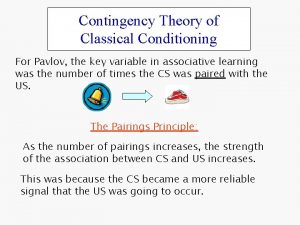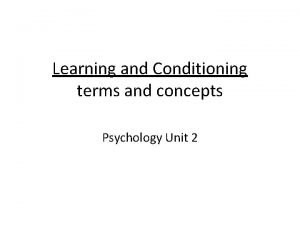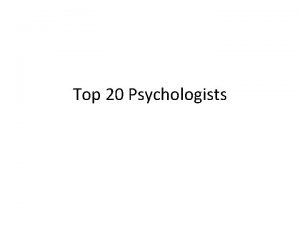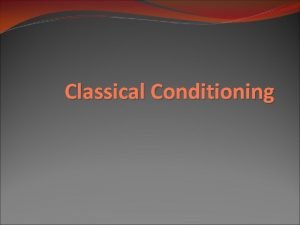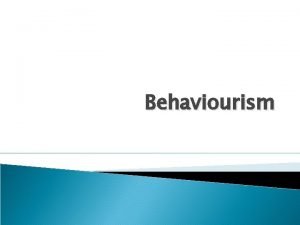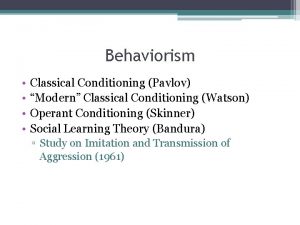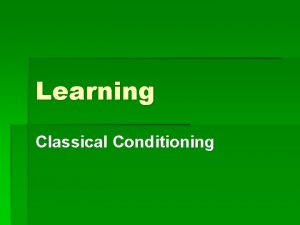Contingency Theory of Classical Conditioning For Pavlov the







- Slides: 7

Contingency Theory of Classical Conditioning For Pavlov, the key variable in associative learning was the number of times the CS was paired with the US. The Pairings Principle: As the number of pairings increases, the strength of the association between CS and US increases. This was because the CS became a more reliable signal that the US was going to occur.

Contingency Theory of Classical Conditioning In the 1960 s, an alternative theory was proposed by Robert A. Rescorla, the Contingency Theory. Rescorla agreed with Pavlov that for learning to take place, the CS had to be a useful predictor of the US. But he disagreed on what made the CS a useful predictor. It was more complicated than the number of CS-US pairings. He maintained that it was the contingency between the CS and US.

Contingency Theory of Classical Conditioning Generally, “contingent” means “conditional”. In classical conditioning, if the CS is paired with the US, then the US is contingent (conditional) on the CS. You can predict from. But more complex relationships can be arranged. Contingencies vary in both degree and direction: Positive contingency: the CS signals an increase in the probability that the US will occur (compared to before the CS). Negative contingency: the CS signals a decrease in the probability that the US will occur (compared to before the CS).

Contingency Theory of Classical Conditioning Example of positive contingency: Example of negative contingency:

Contingency Theory of Classical Conditioning You can also have a zero contingency where the CS predicts neither an increase nor a decrease in the probability of the US. Everything’s random. Example of zero contingency: The food can occur anytime. The bell is irrelevant.

Contingency Theory of Classical Conditioning According to theory, learning only takes place with the positive and negative contingencies. With the zero contingency, the CS is ignored, even if it is sometimes paired with the US. TWO KINDS OF CONDITIONING Excitatory conditioning: the subject learns to perform a certain response, like salivating when the bell is rung. Inhibitory conditioning: the subject learns to withold a certain response by forming a “conditioned inhibitory response. ” This is like a wall. It blocks the salivation.

Contingency Theory of Classical Conditioning KEY POINTS • The positive contingency produces excitatory conditioning. • The negative contingency produces inhibitory conditioning.
